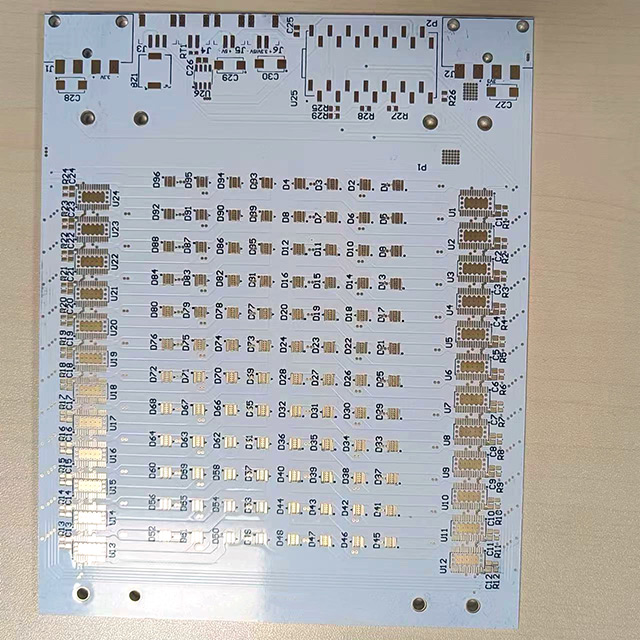Sorry for the disagree red cross Mate, but a main circuit sized conductor for the control circuitry, apart from be unnecessary is impracticable, have you ever tried getting main circuit sized conductors, say above 2.5mm2 cable into the coil/pushbuttons etc terminals?I think the control cables should be closer to the size of the main cables feeding in.
That would be a better practice
-
Pro's OnlyElectricians Arms Electrician Talk How to Access The Arms Domestic Electrician Industrial Electricians Wiring, Theories, Regulations Engineering Chat Periodic Testing Problems Electricians Downloads Commercial Electricians Security (Access-Only) Access Private Area Business Related Advice Certification Schemes Electrical & PAT Testing
-
Please use style selector to select BLUE AND WHITE. If you are not already on it. This notice will go once you're on the correct style.
You are using an out of date browser. It may not display this or other websites correctly.
You should upgrade or use an alternative browser.
You should upgrade or use an alternative browser.
Noisy,buzzing contractor
- Thread starter cliffed
- Start date
-
- Tags
- contractor
The control circuit has lower consumption therefor a smaller cable suitably fused down should be employed, sorry for the red cross by the way, if it's a large load say for example fed by 10mm cable are you suggesting using 10mm cable for the control circuit as well
Not at all,imagine f a fault developed at the point where the main cable enters the isolator/contactor. If the main cable is 25mm and the control cable is 2.5mm, there is a danger that the smaller cable could suffer "burn out". This could result in a fire!!A silly practice I think Steviec 1:
The control circuit has lower consumption therefor a smaller cable suitably fused down should be employed, sorry for the red cross by the way, if it's a large load say for example fed by 10mm cable are you suggesting using 10mm cable for the control circuit as well?
The control feed at this point should ideally be the same or at least 50% of the size of the main cable until it reaches the circuit breaker or fuse for the control circuit.
Of course ideally the cables of dissimilar size could be fed from a busbar system and bolted seperately, this would negate the problem.
Only if the fuse /mcb didn't operateNot at all,imagine f a fault developed at the point where the main cable enters the isolator/contactor. If the main cable is 25mm and the control cable is 2.5mm, there is a danger that the smaller cable could suffer "burn out". This could result in a fire!!
The control feed at this point should ideally be the same or at least 50% of the size of the main cable until it reaches the circuit breaker or fuse for the control circuit.
Of course ideally the cables of dissimilar size could be fed from a busbar system and bolted seperately, this would negate the problem.
Only if the fuse /mcb didn't operate one should always use best practice
Agree, usually a ctrl cable supply comes from elsewhere.like a BMS SYSTEM,if not a C.C supply should of been installed @ some point.Not at all,imagine f a fault developed at the point where the main cable enters the isolator/contactor. If the main cable is 25mm and the control cable is 2.5mm, there is a danger that the smaller cable could suffer "burn out". This could result in a fire!!
The control feed at this point should ideally be the same or at least 50% of the size of the main cable until it reaches the circuit breaker or fuse for the control circuit.
Of course ideally the cables of dissimilar size could be fed from a busbar system and bolted seperately, this would negate the problem.
Maybe a 10 amp C.C.
Cliffed: If you take a butchers at page A5 of:
https://datasheet.octopart.com/RT1S-General-Electric-datasheet-42641207.pdf
it explains the coding system for the part number of the GE contactor series you are working on. The last few digits refer to the coil voltage. Looking at the image you provided these numbers are 400 on the new contactor. An earlier 'A' in the part number means an ac control circuit.
I suspect you have swapped a defective contactor with a 230V ac 50Hz coil for one with a 400V ac 50Hz coil - this would explain the noise and chattering as the coil struggles to close the contactor against the opening springs. You have already pointed out the control circuit is powered L-N thus 230V ac.
https://datasheet.octopart.com/RT1S-General-Electric-datasheet-42641207.pdf
it explains the coding system for the part number of the GE contactor series you are working on. The last few digits refer to the coil voltage. Looking at the image you provided these numbers are 400 on the new contactor. An earlier 'A' in the part number means an ac control circuit.
I suspect you have swapped a defective contactor with a 230V ac 50Hz coil for one with a 400V ac 50Hz coil - this would explain the noise and chattering as the coil struggles to close the contactor against the opening springs. You have already pointed out the control circuit is powered L-N thus 230V ac.
He ought to know better being a Qualified Engineer and all.Cliffed: If you take a butchers at page A5 of:
https://datasheet.octopart.com/RT1S-General-Electric-datasheet-42641207.pdf
it explains the coding system for the part number of the GE contactor series you are working on. The last few digits refer to the coil voltage. Looking at the image you provided these numbers are 400 on the new contactor. An earlier 'A' in the part number means an ac control circuit.
I suspect you have swapped a defective contactor with a 230V ac 50Hz coil for one with a 400V ac 50Hz coil - this would explain the noise and chattering as the coil struggles to close the contactor against the opening springs. You have already pointed out the control circuit is powered L-N thus 230V ac.
Just read this,that’s the old contactor in the pic,it’s coil voltage is 230vHe ought to know better being a Qualified Engineer and all.
Just read this,that’s the old contactor in the pic,it’s coil voltage is 230v
Attachments
The pic is the old contactor,the coil is 230v.Cliffed: If you take a butchers at page A5 of:
https://datasheet.octopart.com/RT1S-General-Electric-datasheet-42641207.pdf
it explains the coding system for the part number of the GE contactor series you are working on. The last few digits refer to the coil voltage. Looking at the image you provided these numbers are 400 on the new contactor. An earlier 'A' in the part number means an ac control circuit.
I suspect you have swapped a defective contactor with a 230V ac 50Hz coil for one with a 400V ac 50Hz coil - this would explain the noise and chattering as the coil struggles to close the contactor against the opening springs. You have already pointed out the control circuit is powered L-N thus 230V ac.
May I ask what the contactor supplies power to? Did it buzz/chatter before? You may want to check all the connections up and downstream of the contactor to see if that makes a difference. A poor or higher resistance connection in one of the lines or neutral will unbalance what would otherwise be a balanced load and thereby create voltage distortion and thence perhaps a distortion of the current through the coil leading to buzzing and noise. Just a thought.
I'd chuck them off site. Last thing you want is someone half-cut snooping around your stuff.
Wait, what? Not a 'nosy boozing contractor?'
In that case IME 95% of all noisy buzzing contactors are mechanically stiff or dirty, not assembled properly or the wrong coil spec. But as Marconi points out, check the coil voltage directly at the terminals in case it's low.
Wait, what? Not a 'nosy boozing contractor?'
In that case IME 95% of all noisy buzzing contactors are mechanically stiff or dirty, not assembled properly or the wrong coil spec. But as Marconi points out, check the coil voltage directly at the terminals in case it's low.
It supplies a TPN DB.May I ask what the contactor supplies power to? Did it buzz/chatter before? You may want to check all the connections up and downstream of the contactor to see if that makes a difference. A poor or higher resistance connection in one of the lines or neutral will unbalance what would otherwise be a balanced load and thereby create voltage distortion and thence perhaps a distortion of the current through the coil leading to buzzing and noise. Just a thought.
I've seen it but it's a bit unusual having such a DB controlled via a contactor.It supplies a TPN DB.
What's it feeding?
Similar threads
- Replies
- 20
- Views
- 2K
- Replies
- 28
- Views
- 4K
OFFICIAL SPONSORS








These Official Forum Sponsors May Provide Discounts to Regular Forum Members - If you would like to sponsor us then CLICK HERE and post a thread with who you are, and we'll send you some stats etc



